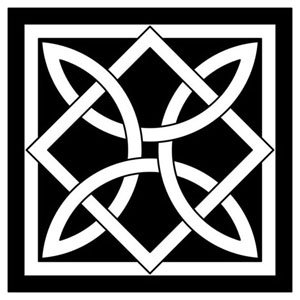Survey and Restoration of the Church of Santo Gemine
/Survey and Restoration of the Church of Santo Geminie
San Gemini, Italy
Project Director: Max Cardillo
Restorer: Nikos Vakalis
The church of Santo Gemine, the main church of San Gemini, is called the Duomo (cathedral), although it is not the seat of bishops. The adjacent parish house is the residence of the town priests and holds the parish offices. The church holds the remains of the town’s patron saint, Santo Gemine, a Syrian monk who lived and preached in the area sometime during the period of the 7th to 9th centuries (sources vary on the dates attributed to his life).
The church has been rebuilt several times, and is one of the oldest churches in San Gemini. Its history is not very clear prior to the 19th century. Some sources say it was first built in the 6th century while others say the 8th century, when, some sources claim, it becomes the seat of the Bishop of Carsulae and San Gemini. These claims are based on the not-so-reliable story of the life of Santo Gemine. The original building was probably completed before the 13th century and was a smaller, religious structure within a cemetery that was located in that area. It was rebuilt once or twice in the 13th to 14th century period as a larger Benedictine church and monastery. Between 1833 and 1847 it was substantially transformed when the whole interior and vaulted roof were redone in a neo-Renaissance style. A new freestanding bell tower was added and the façade was partially reconstructed in a historicized medieval manner by the engineer Livoni, perhaps with some advice from the neoclassical sculptor Antonio Canova
The façade is an interesting collage of different constructions spanning a period of one-thousand years. The present configuration of the façade dates back to a major renovation in the 19th century. The upper half of the façade was most likely completely rebuilt, in a medieval style, including a strange Gothic window with very unusual tracery. On the lower right side of the façade, a section was built of large stone blocks of ancient Roman origin (probably from Carsulae). This wall is part of a medieval tower built sometime between the 9th and 13th centuries. It is unclear whether it was originally the bell tower of an early church or some form of fortress. Eventually, it was incorporated into the church and seems to have been functioning as a bell tower until the 19th century when it was partially knocked down and replaced by the present one. On the lower right, is a projecting masonry base, probably from the 13th century – the time at which the existing Romanesque-style church had been built atop a burial ground. The lower course masonry blocks are made with large recycled Roman building materials taken from a substantial public structure. The central section has traces of a Gothic entrance door, which was later partially sealed-up. This element is part of the Gothic church, completed in the 14th century. It is centered on the main axis of the church and was built up against the preexisting tower. Above the door, cutting into the Gothic arch of the older entrance, is the Gothic window, probably done in the 19th century. The existing door and lunette are in a Renaissance style and probably date back to the 15th century. The façade of the building is skewed in relation to the axis of the church. It is not clear whether it represents an earlier orientation of the church or can be explained by the vernacular tradition of rotating the façade in relation to the axis
Architectural Survey of the Church
The façade and exterior perimeter of the church were surveyed. The façade was drawn showing all the blocks. This was accomplished through orthophotography and by taking measurements using a total station. The exterior perimeter plan of the church, as well as the church interior, was measured and drawn.
Façade Restoration
The restoration of the façade commenced in 2005 and was finished in 2010. The project took this much time because of the large surface of the façade and also because of the short (one-month) seasons for fieldwork. The restoration involved cleaning, pointing, consolidating, and treating the façade’s stone masonry, as well as the door jambs and the small frescoed lunette over the main entrance.
Exposing this medieval masonry was very exciting. Few people in town were aware of the existence of these large blocks under the plaster – probably from the early 20th century. For most it was an interesting surprise that revealed an important historical layer of this building.
The work proceeded without too many other surprises. Most of the stone work was fairly clean, partly because it was regularly washed by rain, but also because it is located far enough away from heavy automobile traffic. For this reason, there were much fewer problems with “black crusts” than at the church of San Giovanni Battista. The lunette contained a badly weathered fresco of God the Father, probably done in the 20th century. Nikos Vakalis, one of our instructors, restored it with the assistance of students in 2010.













